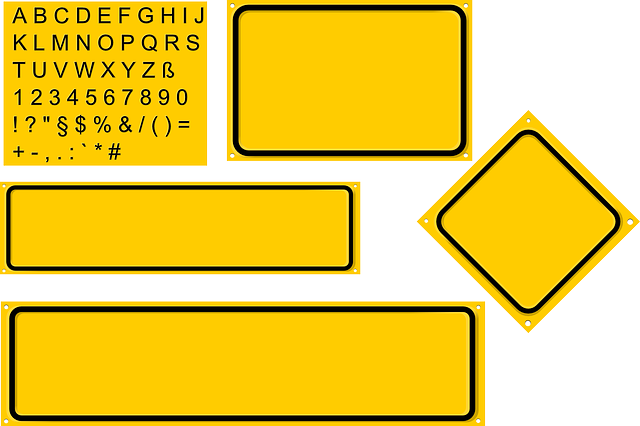آي آر سي
أي أري سي IRC، Internet Relay Chat، هونظام الدردشة على الإنترنت، والذي يتيح التراسل الفوري عن طريق شبكة الإنترنت. ويعتمد على شبكات تستخدم خوادم منتشرة حول العالم تسمح للمستخدمين الاجتماع والتحدث في غرفة محادثة متنوعة في شتى المجالات والاختصاصات.
معلومات تقنية
IRC is an open protocol that uses TCP and optionally TLS. An IRC server can connect to other IRC servers to expand the IRC network. Users access IRC networks by connecting a client to a server. There are many client implementations such as mIRC or XChat and server implementations, e.g. the original IRCd. Most IRC servers do not require users to register an account but a user will have to set a nickname before being connected.
IRC was originally a plain text protocol (although later extended), which on request was assigned port 194/TCP by IANA. However, the de facto has always been to run IRC on 6667/TCP and nearby port numbers (for example TCP ports 6662-6669) to avoid having to run the IRCd software with root privileges.
The protocol specified that characters were 8-bit but did not specify the character encoding the text was supposed to use. This can cause problems when users using different clients and/or different platforms want to converse.
All client-to-server IRC protocols in use today are descended from the protocol implemented in the irc2.4.0 version of the IRC2 server, and documented in RFC 1459. Since RFC 1459 was published, the new features in the irc2.10 implementation led to the publication of several revised protocol documents (RFC 2810, RFC 2811, RFC 2812 and RFC 2813); however, these protocol changes have not been widely adopted among other implementations.[]
Although many specifications on the IRC protocol have been published, there is no official specification, as the protocol remains dynamic. Virtually no clients and very few servers rely strictly on the above RFCs as a reference.[]
Microsoft made an extension for IRC in 1998 via the proprietary IRCX. They later stopped distributing software supporting IRCX, instead developing the proprietary MSN .NET Messenger Service.
New protocol IRCwx (IRC web extension) inspired by IRCX is made by net-bits.net in an attempt to modernize IRCX for web use. IRCwx has been adopted by Buzzen Communications Network.
The standard structure of a network of IRC servers is a tree. Messages are routed along only necessary branches of the tree but network state is sent to every server and there is generally a high degree of implicit trust between servers. This architecture has a number of problems. A misbehaving or malicious server can cause major damage to the network and any changes in structure, whether intentional or a result of conditions on the underlying network, require a net-split and net-join. This results in a lot of network traffic and spurious quit/join messages to users and temporary loss of communication to users on the splitting servers. Adding a server to a large network means a large background bandwidth load on the network and a large memory load on the server. Once established however, each message to multiple recipients is delivered by multicast which means each message travels a network link exactly once. This is a strength in comparison to non-multicasting protocols such as Simple Mail Transfer Protocol (SMTP) or Extensible Messaging and Presence Protocol (XMPP).
Commands and replies
IRC is based on a line-based structure with the client sending single-line messages to the server, receiving replies to those messages and receiving copies of some messages sent by other clients. In most clients users can enter commands by prefixing them with a '/'. Depending on the command, these may either be handled entirely by the client, or (generally for commands the client does not recognize) passed directly to the server, possibly with some modification.[]
Due to the nature of the protocol automated systems cannot always correctly pair a sent command with its reply with full reliability and are subject to guessing.
القنوات
The basic means of communication in an established IRC session is a channel. Channels in a server can be displayed using the IRC command LIST that lists all currently available channels.
Users can join to a channel using the JOIN command, in most clients available as /join #channelname. Messages sent to the joined channels are then relayed to all other users.
Channels that are available across an entire IRC network are prepended with a '#', while those local to a server use '&'. Other non-standard and less common channel types include '+' channels—'modeless' channels without operators — and '!' channels, a form of timestamped channel on normally non-timestamped networks.
الصيغ
Users and channels may have modes which are represented by single case-sensitive letters and are set using the mode command. User modes and channel modes are separate and can use the same letter to mean different things (e.g. usermode "i" is invisible mode whilst channelmode "i" is invite only.) Modes are usually set and unset using the mode command which takes a target (user or channel), a set of modes to set (+) or unset (-) and any parameters the modes need.
Some but not all channel modes take parameters and some channel modes apply to a user on a channel or add or remove a mask (e.g. a ban mask) from a list associated with the channel rather than applying to the channel as a whole. Modes that apply to users on a channel have an associated symbol which is used to represent the mode in names replies (sent to clients on first joining a channel and use of the names command) and in many clients also used to represent it in the client's displayed list of users in a channel or to display an own indicator for a user's modes.
In order to correctly parse incoming mode messages and track channel state the client must know which mode is of which type and for the modes that apply to a user on a channel which symbol goes with which letter. In early implementations of IRC this had to be hard-coded in the client but there is now a de-facto standard extension to the protocol which sends this information to the client at connect time.
There is a small design fault in IRC regarding modes that apply to users on channels, the names message used to establish initial channel state can only send one such mode per user on the channel, but multiple such modes can be set on a single user. For example, if a user holds both operator status (+o) and voice status (+v) on a channel, a new client will be unable to know the less precedented mode (voice). Workarounds for this are possible on both the client and server side but none is widely implemented.
| الصيغ (RFC1459) القياسية | ||||||
|---|---|---|---|---|---|---|
| صيغة المستخدم | صيغة القناة | |||||
| الحرف | الرمز | الوصف | الحرف | الرمز | المتغير | الوصف |
| i | Invisible—cannot be seen without a common channel or knowing the exact name | o | @ | Name of affected user | Channel operator—can change channel modes and kick users out of the channel among other things | |
| s | Receives server notices | s | Secret channel—not shown in channel list or user whois except to users already on the channel | |||
| w | Receives wallops | p | Private channel—listed in channel list as "prv" according to RFC 1459 | |||
| o | & | User is an IRC operator (ircop) | s | Secret channel—not shown in channel list or user whois except to users already on the channel | ||
| q | ~ | User is a channel owner/founder | n | Users cannot send external messages from outside the channel | ||
| o | @ | User is a channel operator | m | Channel is moderated (only those who hold operator or voice status on the channel can send messages to it) | ||
| h | % | User is a half-op (half-operator) | l | Limit number | Limits number of users able to be on channel (when full, no new users can join) | |
| v | + | User is a voiced user. See +m | b | Ban mask (nick!user@host with wildcards allowed) | Bans hostmasks from channel | |
| v | + | Name of affected user | Gives a user voice status on channel (see +m above) | |||
| k | None | New channel key | Sets a channel key such that only users knowing the key can enter | |||
Many IRCd programmers have added extra modes or modified the behavior of modes in the above list so it is strongly advisable to check the documentation of the IRC network or IRCd (though note that the network may have patched the IRCd) for more detailed information on what the modes do on a particular server or network.
مشغلوالأي أر سي
There are also users who maintain elevated rights on their local server, or the entire network; these are called IRC operators, sometimes shortened to IRCops. As the implementation of the ircd varies, so do the privileges of the IRC operator on the given ircd. RFC1459 claims that IRC operators are "a necessary evil" to keep clean state of the network, as such they need to be able to disconnect and reconnect servers. Additionally, to prevent malicious users or even automated programs that may cause harm to enter IRC, IRC operators usually are allowed to disconnect Clients and completely ban IPs and complete subnets. Networks that carry services (Nickserv et al) usually allow their IRC Operators also to handle basic "Ownership" matters. Further privileged rights may include overriding channel bans (being able to join channels they wouldnt be allowed to join if they were not opered), being able to op themselves on channels where they wouldnt be able without being opered, being auto-opped on channels always and so.
Hostmasks
A hostmask is a unique identifier of an IRC client connected to an IRC server.IRC services and bots can use it to identify the client. The hostmask looks similar to, but should not be confused with, an e-mail address. It is a combination of the nickname, ident, and hostname. If ident is not available, then the username is used after being prefixed with a tilde sign. If the IP address cannot be resolved to a valid hostname, then the IP address is used instead.
التحديات
التحدي الاساسي في تصميم اي ار سي كان في كمية البيانات التي يتم تشاركها وكونها محدوده في مداها, غياب تعريف المستخدم المتفرد ادي الي مشكله تضارب الاسماء المستعاره , قله الحماية من انقطاع النقاط في الشبكه اوبين نقطتين في طرق الراوتر الدائري , التضحية بمدي الوصول من أجل حصول المستخدم علي زمن حقيقي للمعلومه،, ضعف البرتكول مما اتاح فرصه لاساءه الاستخدام, عدم وجود شفافيه ومثاليه في تمرير الرسائل , لا وجود للتشفير. بعض هذه التحديات تم معالجتها في نسخ اي ار سي الاحدث IRC.
الهجمات
بما ان ال اي ار سي هي غير مشفره وفي العاده تمتد لفترت اطول,فانها في العاده اكثر جاذبيه للمخترقي. وبسبب ذلك فان سياسات سريه حذره ضروريه لضمان والتاكد من ان شبكه ال اي ار سي هي غير مشكوك فيها من قبل المخترقين كما في حرب الاستيلاء علي ال اي ار سي شبكات اي ار سي ايضا كي لاين اوجي لاين المستخدم الولشبكات مماقد يكون ذواثر ضار. عدد قليل من مخدمات اي ار سي تدعم اتصال عبر برتكول اس اس ال طبقه المدخل الامن لاسباب امنيه، هذا يساعد علي ايقاف استخدام برامج اكمال الحزم للحصول علي حدثات سر لمستخدمي ال اي ار سي، ولكنها ليها استخدام سهل خارج هذا النطاقبسسب طبيعه قنوات ال اي ار سي العامه. اتصال ال اس اس ال يحتاج دعما من جميع من مخدم وعميل(مما قد يستدعي انزال العميل لبرامج ثنائيه وحزم خاصه بالعميل علي جهاز الحاسب الالي الخاص بهم) ان اي ار سي خدم كمعمل للعديد من هجمات الانترنت مثل برتكول التحكم في رسائل الانترنت اي سي ام بي المسجات الغير قابله للوصول اليها وكسرها برتكول التحكم في النقل تي سي بي
IRC served as an early laboratory for many kinds of Internet attacks, such as using fake ICMP unreachable messages to break TCP-based IRC connections (nuking) to annoy users or facilitate takeovers.
منع سوء الاستخدام
One of the most contentious technical issues surrounding IRC implementations, which survives to this day, is the merit of "Nick/Channel Delay" vs. "Timestamp" protocols. Both methods exist to solve the problem of denial-of-service attacks, but take very different approaches. The problem with the original IRC protocol as implemented was that when two servers split and rejoined, the two sides of the network would simply merge their channels. If a user could join on a "split" server, where a channel which existed on the other side of the network was empty, and gain operator status, they would become a channel operator of the "combined" channel after the netsplit ended; if a user took a nickname which existed on the other side of the network, the server would kill both users when rejoining (i.e., 'nick-collision'). This was often abused to "mass-kill" all users on a channel, thus creating "opless" channels where no operators were present to deal with abuse. Apart from causing problems within IRC, this encouraged people to conduct denial of service attacks against IRC servers in order to cause netsplits, which they would then abuse. ========Nick/channel delay العنق وتاخير القناة العنق/تاخير القناة يختصر (ان دي/ سي دي) كان حل هذه المشكله بسيطاً. فبعد ان يسجل المستخدم الخروج والعقده تصبح متوفره اوقناه تصبح متوفره نتيجه خروج جميع المستخدمين فان المخدم لا يسمح لاحد باستخدام نفس اسم المستخدك اوالدخول للقناه لحين مرور فتره زمنيه نسمي (فتره التاخير). ان الفكره من وراء هذه الفتره انه حتي طالما خدوث انفصال لاخد العقد فانها تكزن عديمه الفائده مع استحاله الحصول علي اسم المستخدم اوالحصول علي وضع العمل من القناه وبالتالي لايحدث تضارب في الاسماء المستعاره اوتداخل بين القنوات. الي حد ما فن هذا السناريويتعب المستخدمين الذين قد يجبرون علي استخدام اسماء مستخدم مختلفه(كان من الشائع اضافه الفاصله السفليه).
Timestamping
The alternative, the timestamp or TS protocol, took a different approach. Every nickname and channel on the network was assigned a timestamp – the date and time when it was created. When a netsplit occurred, two users on each side were free to use the same nickname or channel, but when the two sides were joined, only one could survive. In the case of nicknames, the newer user, according to their TS, was killed; when a channel collided, the members (users on the channel) were merged, but the channel operators on the "losing" side of the split lost their channel operator status. TS is a much more complicated protocol than ND/CD, both in design and implementation, and despite having gone through several revisions, some implementations still have problems with "desyncs" (where two servers on the same network disagree about the current state of the network), and allowing too much leniency in what was allowed by the 'losing' side. Under the original TS protocols, for example, there was no protection against users setting bans or other modes in the losing channel which would then be merged when the split rejoined, even though the users who had set those modes lost their channel operator status. Some modern TS-based IRC servers have also incorporated some form of ND and/or CD in addition to timestamping in an attempt to further curb abuse. Most networks today use the timestamping approach. The timestamp versus ND/CD disagreements caused several servers to split away from EFnet and form the newer IRCnet. After the split, EFnet moved to a TS protocol, while IRCnet used ND/CD. ========الحفظ في النسخ الحاليه فانمشكله الاختناق والتاخير تم توسيعه اواستبداله باليه تسمي حفظ. هذه الاليه تسند للك عميل رقم تعريف منفرد ال يتكرر عند اتصاله بمخدم آي آر سي. رقم التعريف يبدا برقم هوممنوع في . This ID starts with a number, which is forbidden in nicks. Clients may now choose to use their UID or any free nick; however if two clients with the same nickname are joined from different sides of a netsplit ("Collision"), the first server to see this collision will force BOTH clients to change their nick to their UID, thus SAVEing both clients from being disconnected. The nickname will be locked for some time (ND) to prevent both clients to change to the original nickname back, thus colliding again.
الشبكات
There are thousands of running IRC networks in the world. They run various implementations of IRC servers, and are administered by various groups of IRC operators, but the protocol exposed to IRC users is very similar, and all IRC networks can be accessed by the same client software, although there might be slight incompatibilities and limited functionality due to the differing server implementations.[]
One can join servers by clicking on an "irc://irc.network.example:port/#channel1,#channel2,#channel3" hyperlink.
The largest IRC networks have traditionally been grouped as the "Big Four" — a designation for networks that top the statistics. The Big Four networks change periodically, but due to the community nature of IRC there are a large number of other networks for users to choose from.
Historically the "Big Four" were:
- EFnet
- IRCnet
- Undernet
- DALnet
Today the "Big Four" are:
- EFnet
- IRCnet
- QuakeNet
- Undernet
For network statistics, rankings, and a list of smaller networks, see netsplit.de, Search IRC and Gogloom.
freenode is quite popular with community based projects, especially Free and Open Source Software projects. A lot of users of various FOSS projects use freenode since a lot of FOSS projects have official IRC channels there.
حصة الإستخدام
As of March 2009, the top 100 IRC networks served more than half a million users at a time, with hundreds of thousands of channels (the vast majority of which stand mostly vacant), operating on a total of roughly 1,500 servers worldwide.
According to statistics by netsplit.de, the topعشرة populated networks accounted for 66 per cent of usage in the top 100 populated networks. That is, more than 370,000 users at a time. These networks had an average of just less than 1,500 users per server. The top 20 populated networks accounted for 77 per cent of usage (again, in the top 100 networks). That is, more than 430,000 users at a time. These networks had an average of 1,000 users per server. According to these statistics, the top 100 networks served more than 560,000 users at a time, on 1,450 servers, with an average load of 390 users per server.
Statistics from gogloom show similar results, with more than 570,000 users served at a time. According to these statistics, 78 per cent of users were concentrated on the topعشرة networks. That is, more than 450,000 users at a time. Furthermore, the top 20 networks house 86 per cent of users, with almost half a million users at a time.
According to statistics by Search IRC, as of March 2009, it monitored more than 760,000 users on 650 different networks spread over 7,600 servers. Giving an overall server load of 100 users per server. Here too 90 percent of the users were concentrated in 250 (a third) of the monitored networks, with the vast majority of networks being small/local with less than 200 users per network.
العملاء
عميل البرمجيات
There are IRC clients available for several operating systems.
The most popular Windows-based IRC client is mIRC. Other popular Windows IRC clients are Miranda IM, KVIrc, Trillian, Pidgin, XChat, and XiRCON. Popular Unix and Linux clients include BitchX, irssi, KVIrc, XChat, Konversation, and the traditional ircII and derivatives. For Mac OS X, the most widely used clients are Snak, Ircle and Colloquy.[] OS X can also run most Unix-like command line and X11 IRC clients. Web based clients include Mibbit and WebIRC.
A client called ERC, written entirely in Emacs Lisp is included in v.22.3 of Emacs. Therefore, any platform that can run Emacs can run ERC.
There are a number of web browsers with built in IRC clients. Opera has a built in IRC client.Mozilla Firefox does not have a built-in IRC client, though ChatZilla, a Firefox add-on, can be installed to provide access to IRC in the browser. ChatZilla is part of the SeaMonkey internet suite.
Built-in IRC is utilized by many computer games, such as War§ow, Unreal Tournament (up to Unreal Tournament 2004), Uplink, and Zdaemon. The Soulseek file sharing network is based on IRC[]; Ustream's chat interface is IRC with custom authentication.
Bots
Automated clients are called bots. As bots evolved, they began to serve as permanent points of contact for information exchange and protection agents for the channels they served, because of their superior speed when compared to humans. Presently, although many of these functions are often delegated to network-provided services which allow for registration and management of both nicknames and channels, bots remain popular and continue to be adapted to new and unexpected tasks.
Bots have been written in a variety of languages, and a wide array of implementations exist. Most modern IRC services typically implement bot-like interfaces, through which users can communicate with and control the functionality. Bots have also been created for malevolent uses, such as flooding or taking over channels, ousting their rightful owners.
Bouncer
A program that runs as a daemon on a server and functions as a persistent proxy is known as a BNC or bouncer. The purpose is to maintain a connection to an IRC server, acting as a relay between the server and client, or simply to act as a proxy. Should the client lose network connectivity, the BNC may stay connected and archive all traffic for later delivery, allowing the user to resume his IRC session without disrupting their connection to the server.
Furthermore, as a way of obtaining a bouncer-like effect, an IRC client (typically text-based, for example Irssi) may be run on an always-on server to which the user connects via ssh. This also allows devices that only have ssh functionality, but no actual IRC client installed themselves, to connect to the IRC, and it allows sharing of IRC sessions.
To keep the IRC client from quitting when the ssh connection closes, the client can be run inside a piece of screen-detaching software (e.g. GNU Screen or tmux), thus staying connected to the IRC network(s) constantly and able to log conversation in channels that the user is interested in, etc. Modelled after this setup, an IRC client following the client-server model, called Quassel IRC, has been developed.
محركات البحث
There are numerous search engines available to aid the user in finding what they are looking for on IRC. Generally the search engine consists of two parts, a "back-end" (or "spider/crawler") and a front-end "search engine".
The back-end (spider/crawler) is the work horse of the search engine. It is responsible for crawling IRC servers to index the information being sent across them. The information that is indexed usually consists solely of channel text (text that is publicly displayed in public channels). The storage method is usually some sort of relational database, like MySQL or Oracle.[]
The front-end "search engine" is the user interface to the database. It supplies users with a way to search the database of indexed information to retrieve the data they are looking for. These front-end search engines can also be coded in numerous programming languages. The more popular languages for such search engines and indexing spiders are Perl, PHP and C.[]
Most search engines have their own spider that is a single application responsible for crawling IRC and indexing data itself; however, others are "user based" indexers. The latter rely on users to install their "add-on" to their IRC client; the add-on is what sends the database the channel information of whatever channels the user happens to be on.[] IRC search engines have completely automated the process of finding information on IRC and have thus contributed greatly to the popularity of IRC in recent years.[]
أي أر سي الحديث
IRC has changed much over its life on the Internet. New server software has added a multitude of new features.
- Services: Network-operated bots to facilitate registration of nicknames and channels, sending messages for offline users and network operator functions.
- Extra modes: While the original IRC system used a set of standard user and channel modes, new servers add many new modes for such features as removing color codes from text, or obscuring a user's hostmask ("cloaking") to protect from denial-of-service attacks.[]
- Proxy detection: Most modern servers support detection of users attempting to connect through an insecure (misconfigured or exploited) proxy server, which can then be denied a connection. An example is the Blitzed Open Proxy Monitor or BOPM. This proxy detection software is used by several networks, although that real time list of proxies is defunct since early 2006.[]
- Additional commands: New commands can be such things as shorthand commands to issue commands to Services, to network operator only commands to manipulate a user's hostmask.[]
- Encryption: For the client-to-server leg of the connection SSL might be used (messages cease to be secure once they are relayed to other users on standard connections, but it makes eavesdropping on or wiretapping an individual's IRC sessions difficult). For client-to-client communication, SDCC (Secure DCC) can be used.[]
- Connection protocol: IRC can be connected to via IPv4, the current standard version of the Internet Protocol, or by IPv6, the next-generation version of the Protocol.
- Account registration and profile: IRCwx protocol adds web based account registration and user profiles.
ترميز الحروف
IRC still lacks a single globally accepted standard convention for how to transmit characters outside the 7-bit ASCII repertoire. IRC servers normally[] transfer messages from a client to another client just as byte sequences, without any interpretation or recoding of characters. The IRC protocol (unlike e.g. MIME or HTTP) lacks mechanisms for announcing and negotiation character encoding options. This has put the responsibility for choosing the appropriate character codec on the client. In practice, IRC channels have largely used the same character encodings that were also used operating systems (in particular Unix derivatives) in the respective language communities:
- 7-bit era: In the early days of IRC, especially among Scandinavian and Finnish language users, national variants of ISO 646 were the dominant character encodings. These encode non-ASCII characters like Ä Ö Å ä ö å at code positions 0x5B 0x5C 0x5D 0x7B 0x7C 0x7D (US-ASCII: [ \ ] { | ). That is why these codes are always allowed in nicknames. According to RFC 1459, { | in nicknames should be treated as lowercase equivalents of [ \ ] respectively. By the late 1990s, the use of 7-bit encodings had disappeared in favour of ISO 8859-1, and such equivalence mappings were dropped from some IRC daemons.
- 8-bit era: Since the early 1990s, 8-bit encodings such as ISO 8859-1 have become commonly used for European languages. Russian users had a choice of KOI8-R, ISO 8859-5[] and CP1251, and since about 2000, modern Russian IRC networks convert between these different commonly used encodings of the Cyrillic alphabet.
- Multi-byte era: East Asian IRC channels with ideographic scripts in China, Japan, and Korea have used for a long time multi-byte encodings such as EUC or ISO-2022-JP. With the common migration from ISO 8859 to UTF-8 on Linux and Unix platforms since about 2002, UTF-8 has become an increasingly popular substitute for many of the previously used 8-bit encodings in European channels. Some IRC clients are now capable of reading messages both in ISO 8859-1 or UTF-8 in the same channel, heuristically autodetecting which encoding is used. The shift to UTF-8 began in particular on Finnish-speaking IRC (fi:IRC#Merkistö (Finnish)).
Today, the UTF-8 encoding of Unicode/ISO 10646 would be the most likely contender for a single future standard character encoding for all IRC communication, if such standard ever relaxed the 510 bytes message size restriction. UTF-8 is ASCII compatible and covers the superset of all other commonly used coded character set standards.
مشاركة الملفات
Much like conventional P2P file sharing, users can create file servers that allow them to share files with each other by using customised IRC bots or scripts for their IRC client. Often users will group together to distribute warez via a network of IRC bots.
Technically, IRC provides no file transfer mechanisms itself; file sharing is implemented by IRC clients, typically using the Direct Client-to-Client (DCC) protocol, in which file transfers are negotiated through the exchange of private messages between clients. The vast majority of IRC clients feature support for DCC file transfers, hence the view that file sharing is an integral feature of IRC. The commonplace usage of this protocol, however, sometimes also causes DCC Spam. DCC commands have also been used to exploit vulnerable clients into performing an action such as disconnecting from the server or exiting the client.
انظر أيضا
- Chat room
- Client-to-client protocol
- Comparison of instant messaging protocols
- Comparison of IRC clients
- Comparison of IRC daemons
- Comparison of IRC services
- Internet slang
- List of IRC commands
- Serving channel
- vhost (IRC)
المصادر
- ^ خطأ استشهاد: وسم
<ref>غير سليم؛ لا نص تم توفيره للمراجع المسماةrfc 1459 1 introduction - ^ نطقب:Cite IETF
- ^ نطقب:Cite IETF
- ^ نطقب:Cite IETF
- ^ IANA.org
- ^ نطقب:Cite IETF
- ^ نطقب:Cite IETF
- ^ IRCX Protocol Addition Specification
- ^ IRCwx Server Page
- ^ نطقب:Cite IETF
- ^ نطقب:Cite IETF
- ^ نطقب:Cite IETF
- ^ نطقب:Cite IETF
- ^ نطقب:Cite IETF
- ^ نطقب:Cite IETF
- ^ نطقب:Cite IETF
- ^ List mode extension showing pair confusion for lists
- ^ نطقب:Cite IETF
- ^ نطقب:Cite IETF
- ^ نطقب:Cite IETF
- ^ نطقب:Cite IETF
- ^ نطقب:Cite IETF
- ^ نطقب:Cite IETF
- ^ نطقب:Cite IETF
- ^ نطقب:Cite IETF
- ^ نطقب:Cite IETF
- ^ نطقب:Cite IETF
- ^ نطقب:Cite IETF
- ^ IRC.org
- ^ Definition of wallops
- ^ Alien.net.au
- ^ Alien.net.au
- ^ Webtoman.com
- ^ نطقب:Cite IETF
- ^ نطقب:Cite IETF
- ^ Thiedeke, Udo (September 2003). (Second Edition ed.). Westdeutscher Verlag. pp. 314, 337. Retrieved March 30, 2010.CS1 maint: extra text (link)
-
^ Rogers, Russ (2005). . Syngress. ISBN . Retrieved March 30, 2010. Unknown parameter
|coauthors=ignored (|author=suggested) (help) -
^ Petersen, Julie K. (2002). The telecommunications illustrated dictionary (Second Edition ed.). CRC Press. p. 1073.
|access-date=requires|url=(help)CS1 maint: extra text (link) - ^ "Frequently-Asked Questions". Freenode. Retrieved March 30, 2010.
- ^ نطقب:Cite IETF
- ^ نطقب:Cite IETF
- ^ Functionality Provided by Systems for Synchronous Conferencing, 1.2.1 Growth, Loesch 1992-2003
- ^ نطقب:Cite IETF
- ^ نطقب:Cite IETF
- ^ Functionality Provided by Systems for Synchronous Conferencing, 1.2.2 Network failures, Loesch 1992-2003
- ^ نطقب:Cite IETF
- ^ Functionality Provided by Systems for Synchronous Conferencing, 1.2.3 Sociological and security aspects, Loesch 1992-2003
- ^ نطقب:Cite IETF
- ^ نطقب:Cite IETF
- ^ Charalabidis, Alex (1999-12-15). "IRCing On The Macintosh: Ircle". The Book of IRC: The Ultimate Guide to Internet Relay Chat (1st ed.). San Francisco, California: No Starch Press. p. 61. ISBN .
On large networks such as the Big Four — EFnet, IRCnet, Undernet, and DALnet — trying to list the thousands of channels with Ircle always causes you to disconnect due to the flood of information, while other clients can usually manage the feat if you are on a direct Ethernet connection.
- ^ Jones, Steve, ed. (2002-12-10). "Internet Relay Chat". Encyclopedia of New Media: An Essential Reference to Communication and Technology (1st ed.). Thousand Oaks, California: SAGE Publications. p. 257. ISBN .
Today there are hundreds of independent IRC networks, but the "Big Four" are EFNet, UnderNet, Dalnet, and IRCnet.
- ^ Rittner, Don (1999-03-03). The iMac Book (1st ed.). Scottsdale, Arizona: Coriolis Group. p. 215. ISBN .
There are several large networks: EFnet, UnderNET, DALnet, and IRCnet make up the Big Four.
- ^ Turban, Efraim; Leidner, Dorothy; McLean, Ephraim; Wetherbe, James (2005-02-07). "Communication". Information Technology for Management: Transforming Organizations in the Digital Economy (5th ed.). Hoboken, New Jersey: John Wiley & Sons. pp. 106 , – 107. ISBN .
The largest networks have traditionally been grouped as the "Big Four": EFNet, IrcNet, QuakeNet, and UnderNet.
- ^ Schweitzer, Douglas, Internet Relay Chat: IRC the Place to Be?, http://www.pcflank.com/art32.htm, retrieved on 2007-03-25
- ^ Opera Browser Wiki: IRC Client
- ^ ChatZilla Firefox Addon
- ^ SeaMonkey: Features
- ^ IRC Module - Warsow Wiki
- ^ Unreal 2004 Review mentioning IRC
- ^ The Ultimate Uplink Guide
- ^ ZDaemon - The Doom Wiki
- ^ http://www.ustream.tv/forum/showthread.php?p=1516
- ^ BNC IRC proxy
- ^ psyBNC Readme
- ^ Blog: IRC with irssi-proxy & screen
- ^ About Quassel IRC
- ^ Mutton, Paul (2004-07-27). "Users and Channels". IRC Hacks (1st ed.). Sebastopol, California: O'Reilly Media. pp. 44 , – 46. ISBN .
- ^ Wang, Wallace (2004-10-25). "Instant Messaging and Online Chat Rooms". Steal this File Sharing Book (1st ed.). San Francisco, California: No Starch Press. pp. 65 , – 67. ISBN .
- ^ Zdnet.com
- ^ Macobserver.com
قائمة المراجع
- نطقب:Cite IETF
- نطقب:Cite IETF
- نطقب:Cite IETF
- نطقب:Cite IETF
قراءات إضافية
- نطقب:Cite IETF
- نطقب:Cite IETF
وصلات خارجية
- IRC.org - Technical and Historical IRC6 information; Articles on the history of IRC
- IRChelp.org - Internet Relay Chat (IRC) help archive; Large archive of IRC-related documents
- IRC/2 Numerics List - List of numeric replies for the IRC protocol
نطقب:IRC topics
















